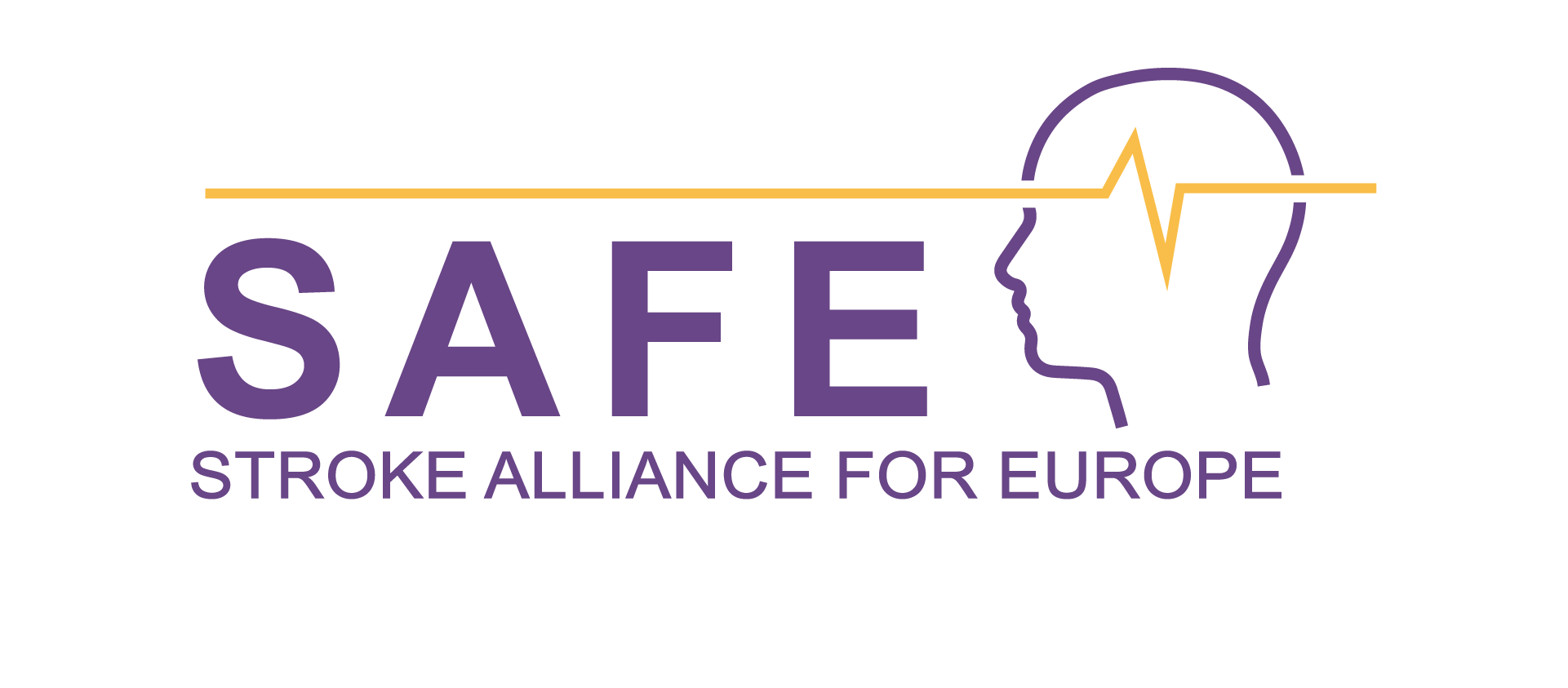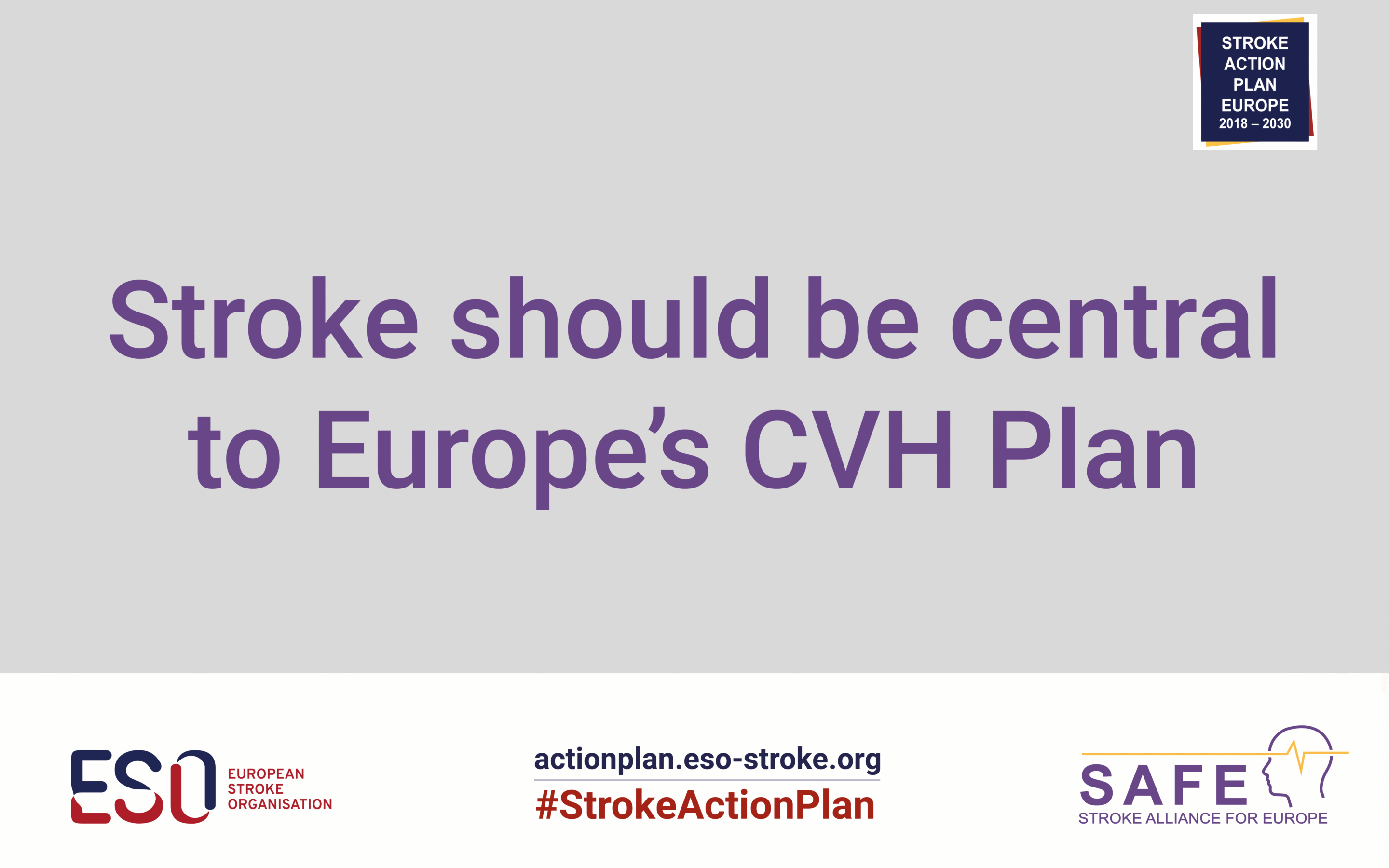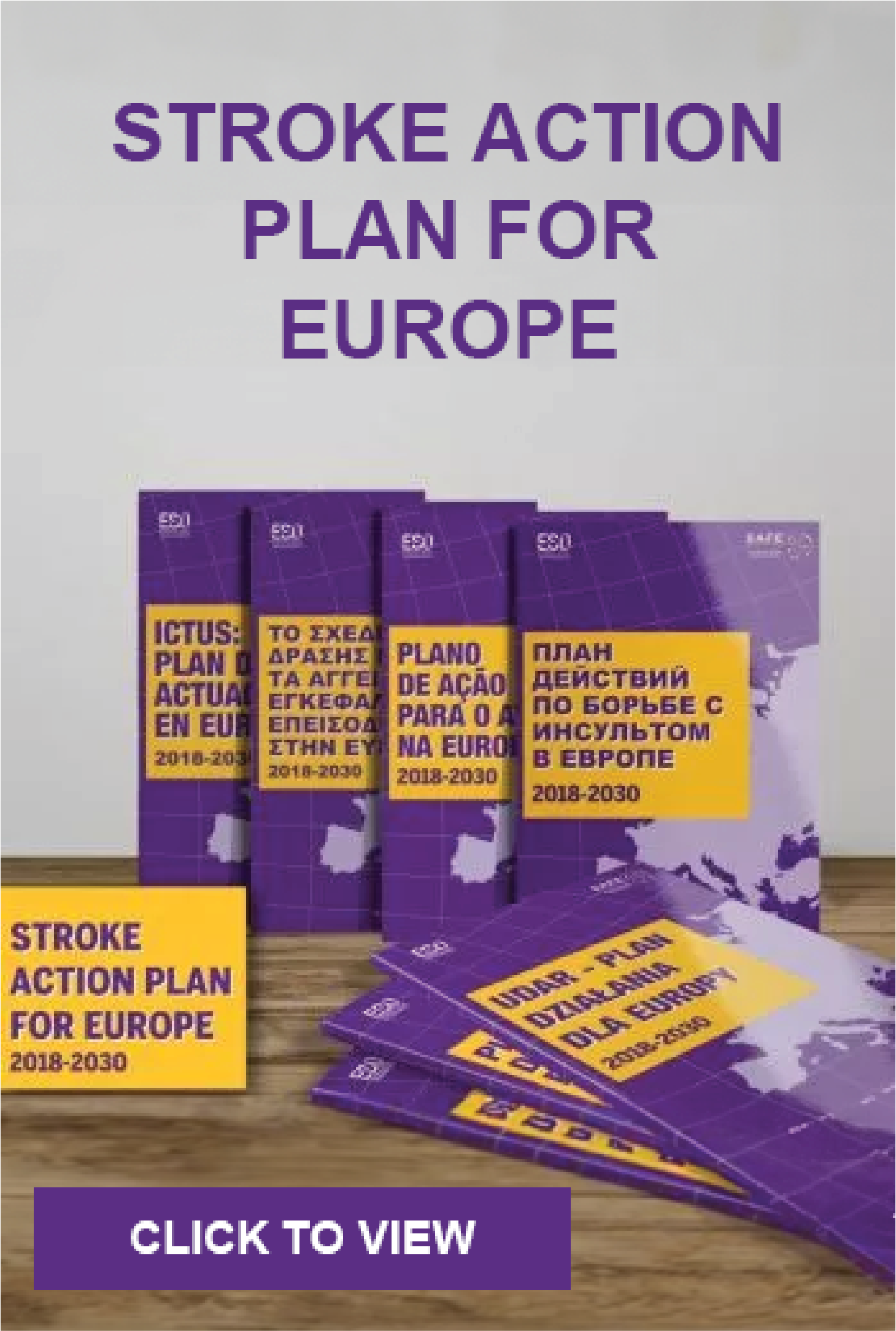SAFE and the European Stroke Organisation (ESO) have jointly responded to the European Commission’s public consultation on the forthcoming EU Cardiovascular Health (CVH) Plan. With stroke being one of Europe’s leading causes of death and disability, we believe that it must be central to the EU’s strategy. Building on the Stroke Action Plan for Europe (SAP-E), we outline clear priorities to ensure that stroke is fully addressed within the EU CVH health plan to ensure that the people in the EU are supported at every stage, from prevention and acute care to recovery, research and life beyond.
Read the full consultation submission below:
The Stroke Alliance for Europe (SAFE) and the European Stroke Organisation (ESO) welcome the European Commission’s work on the EU Cardiovascular Health (CVH) Plan. We call on the Commission to place stroke, one of the most prevalent cardiovascular conditions, at the heart of the plan to ensure the EU achieves its objective of reducing its burden of cardiovascular disease (CVD).
As with all CVD, reduction in stroke are possible through preventive lifestyle interventions by legislative changes and fiscal policies (eg pollution and tobacco) and action on risk factors (eg hypertension, atrial fibrillation, diabetes and high cholesterol). Addressing these will reduce the impact and cost of stroke and all CVD. CVD prevention lowers stroke risk and quality stroke care reduces CVD recurrence. Stroke outcomes are improved when treated as an emergency and access is provided to specialised acute care, rehabilitation and long-term support.
Stroke is Europe’s 2nd biggest killer and the greatest cause of acquired long-term disability, responsible annually for 440,000 deaths and €60 billion in total costs. Yet prevention, acute care, rehabilitation, long-term support and research for stroke remain fragmented and under-resourced, leading to preventable deaths and disability. This perpetuates a sense of abandonment among survivors who face insufficient rehabilitation and community-based support. Investment in lifesaving interventions and research is essential and must go hand in hand with post-discharge services and support to ensure the lives saved are worth living.
Our Stroke Action Plan for Europe (SAP-E) highlights 7 priorities to fully embed stroke in the EU CVH Plan:
- Shared risk factors and primary prevention. Support actions to tackle the primary drivers of preventable CVD, promote systematic screening for hypertension and atrial fibrillation, and facilitate the exchange of best practices on opportunistic screening in primary care.
- Organisation of acute services. Recommend Member States (MS) ensure timely access to dedicated accredited stroke units, including EU-wide guidelines and benchmarks on stroke unit access and provided care, supported by coordinated emergency services and validated pre-hospital identification tools.
- Management of acute incidents. Promote faster access to life-saving interventions such as thrombolysis and thrombectomy by encouraging MS to set targets for maximum time between hospital arrival and treatment, connect smaller hospitals with specialist centres, and use EU funding to strengthen imaging and treatment capacity across regions.
- Secondary prevention and follow-up. Recommend MS create outpatient services targeting secondary prevention of stroke which are integrated into broader cardiovascular prevention policies and provide structured follow-up and rapid access to preventative drugs, surgical/device interventions and non-pharmacological secondary prevention/ lifestyle advice.
- Rehabilitation. Help restore independence and quality of life, by promoting minimum standards for early and intensive, multidisciplinary rehabilitation across MS, facilitate knowledge-sharing on effective pathways, and mobilise EU4Health funding to expand community and outpatient rehabilitation services.
- Life after stroke. Recommend MS integrate long-term support (including mental health, return-to-work, and social reintegration) into national frameworks, incorporating the role of patient organisations in support and advocacy.
- Evaluation, quality improvement and research. Propose EU-level stroke registries and performance indicators, foster systematic outcome monitoring across the stroke pathway, and embed stroke within CVD research agendas to advance prevention, acute treatment, rehabilitation and life after stroke.
Integrating stroke as a central issue in the EU CVH Plan will save lives, prevent disability and reduce costs. SAFE and ESO support these ambitions, including through our SAP-E, to ensure no one is left behind.





